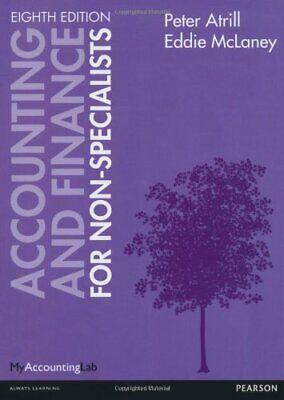Question
HomeGrown Company is a chain of grocery stores that are similar to indoor farmer's markets, providing fresh, local produce, meats, and dairy products to consumers
HomeGrown Company is a chain of grocery stores that are similar to indoor farmer's markets, providing fresh, local produce, meats, and dairy products to consumers in urban areas. HomeGrown is considering opening several stores in a new city, and has proposals from three contractors (Alpha, Beta, and Gamma companies) who would like to provide buildings for the new stores.
The amount of expected revenue from the stores will depend on the design of the contractor. For example, if HomeGrown decides on a more open floor plan, with less shelf space for products, revenue would be lower overall. However, if HomeGrown decides on a very crowded floor plan, it may lose customers who appreciate a more open feel.
As the project manager for HomeGrown, you are responsible for deciding which if any of the proposals to accept. HomeGrown's minimum acceptable rate of return is 20%. You receive the following data from the three contractors:
| Proposal | Type of Floor Plan | Initial Cost if Selected | Residual Value |
| Alpha | Very open, like an indoor farmers market | $1,472,000 | $0.00 |
| Beta | Standard grocery shelving and layout, minimal aisle space | 5,678,900 | 0.00 |
| Gamma | Mix of open areas and shelving areas | 2,125,560 | 0.00 |
You have computed estimates of annual cash flows and average annual income from customers for each of the three contractors' plans. You believe that the annual cash flows will be equal for each of the 10 years for which you are preparing your capital investment analysis. Your conclusions are presented in the following table.
| Proposal | Estimated Average Annual Income (after depreciation) | Estimated Average Annual Cash Flow |
| Alpha | $302,054 | $351,145 |
| Beta | 272,019 | 475,608 |
| Gamma | 527,245 | 592,819 |
Average Rate of Return
You begin by trying to eliminate any proposals that are not yielding the companys minimum required rate of return of 20%. Complete the following table, and decide whether Alpha, Beta, and/or Gamma should be eliminated because the average rate of return of their project is less than the company's minimum required rate of return.
Complete the following table. Enter the average rates of return as percentages rounded to two decimal places.
| Proposal | Estimated Average Annual Income | Average Investment | Average Rate of Return | Accept or Reject |
| Alpha | $fill in the blank f27a05ff6fa2f90_1 | $fill in the blank f27a05ff6fa2f90_2 | fill in the blank f27a05ff6fa2f90_3% | |
| Beta | fill in the blank f27a05ff6fa2f90_5 | fill in the blank f27a05ff6fa2f90_6 | fill in the blank f27a05ff6fa2f90_7 | |
| Gamma | fill in the blank f27a05ff6fa2f90_9 | fill in the blank f27a05ff6fa2f90_10 | fill in the blank f27a05ff6fa2f90_11 |
Cash Payback Method
Youve decided to confirm your results from the average rate of return by using the cash payback method.
Using the following table, compute the cash payback period of each investment. If required, round the number of years in the cash payback period to a whole number.
| Proposal | Initial Cost | Annual Net Cash Inflow | Cash Payback Period in Years |
| Alpha | $fill in the blank 134551f82038f8d_1 | $fill in the blank 134551f82038f8d_2 | fill in the blank 134551f82038f8d_3 |
| Beta | fill in the blank 134551f82038f8d_4 | fill in the blank 134551f82038f8d_5 | fill in the blank 134551f82038f8d_6 |
| Gamma | fill in the blank 134551f82038f8d_7 | fill in the blank 134551f82038f8d_8 | fill in the blank 134551f82038f8d_9 |
Net Present Value
Even though youre fairly certain that your evaluation and elimination is correct, you would like to compare the three proposals using the net present value method, and get some data about the internal rate of return of the proposals, each of which are expected to generate their respective annual net cash inflows for a period of 10 years.
Compute the net present value of each proposal. You may need the following partial table of factors for present value of an annuity of $1. Round the present value of annual net cash flows to the nearest dollar. If your answer is zero enter "0". For the net present value, if required, use the minus sign (-) to indicate a negative amount.
| Present Value of an Annuity of $1 at Compound Interest (Partial Table) | ||
| Year | 10% | 20% |
| 1 | 0.909 | 0.833 |
| 5 | 3.791 | 2.991 |
| 10 | 6.145 | 4.192 |
| Alpha | Beta | Gamma | |
| Annual net cash flow | $fill in the blank 7fa6ff0d701f00a_1 | $fill in the blank 7fa6ff0d701f00a_2 | $fill in the blank 7fa6ff0d701f00a_3 |
| Present value factor | fill in the blank 7fa6ff0d701f00a_4 | fill in the blank 7fa6ff0d701f00a_5 | fill in the blank 7fa6ff0d701f00a_6 |
| Present value of annual net cash flows | $fill in the blank 7fa6ff0d701f00a_7 | $fill in the blank 7fa6ff0d701f00a_8 | $fill in the blank 7fa6ff0d701f00a_9 |
| Amount to be invested | fill in the blank 7fa6ff0d701f00a_10 | fill in the blank 7fa6ff0d701f00a_11 | fill in the blank 7fa6ff0d701f00a_12 |
| Net present value | $fill in the blank 7fa6ff0d701f00a_13 | $fill in the blank 7fa6ff0d701f00a_14 | $fill in the blank 7fa6ff0d701f00a_15 |
Step by Step Solution
There are 3 Steps involved in it
Step: 1

Get Instant Access to Expert-Tailored Solutions
See step-by-step solutions with expert insights and AI powered tools for academic success
Step: 2

Step: 3

Ace Your Homework with AI
Get the answers you need in no time with our AI-driven, step-by-step assistance
Get Started


